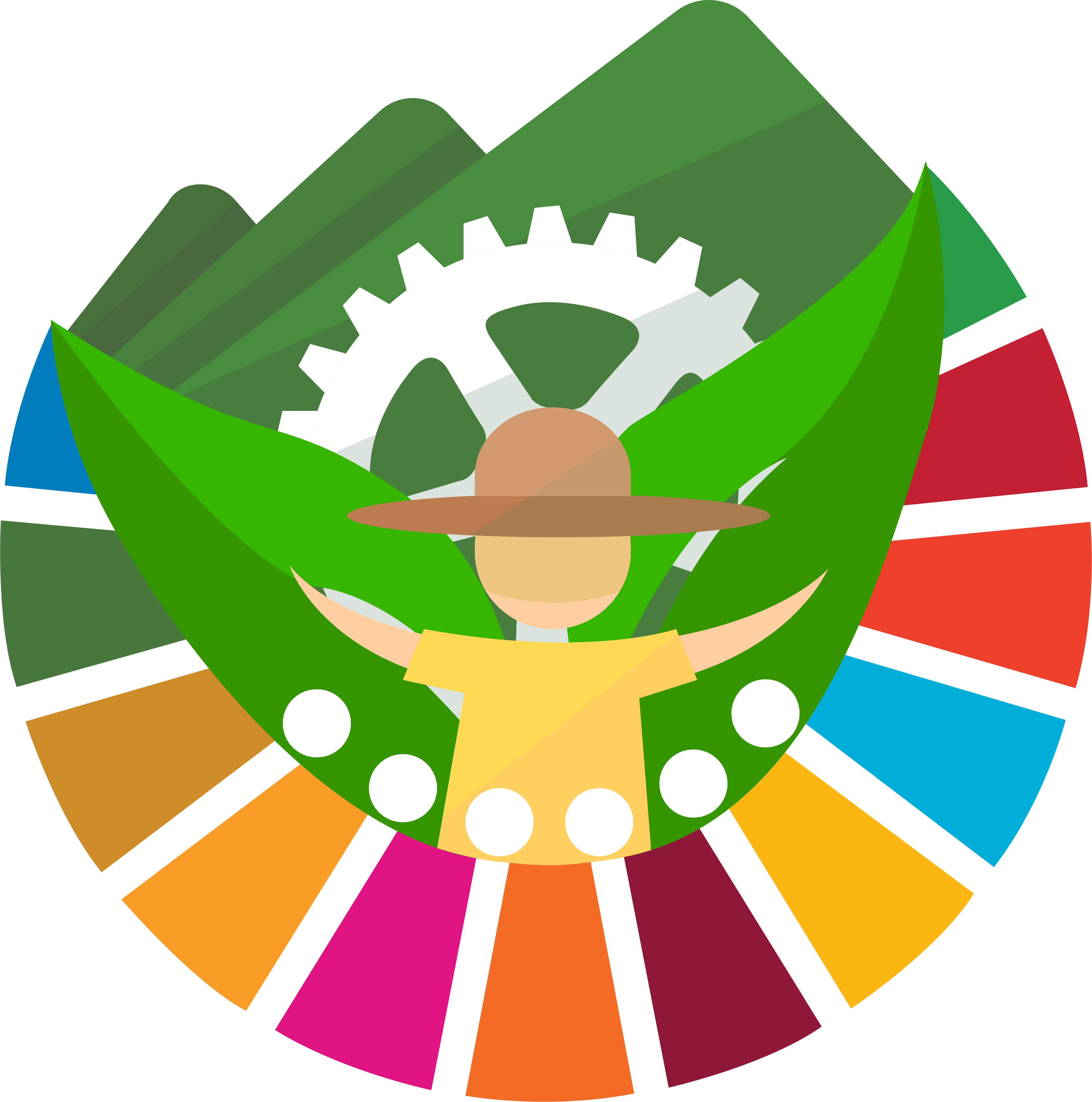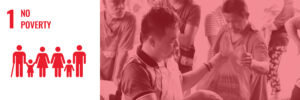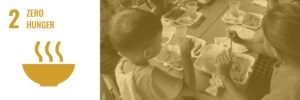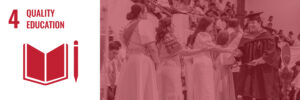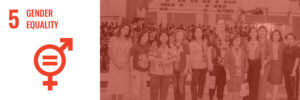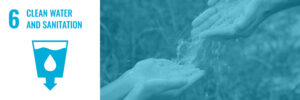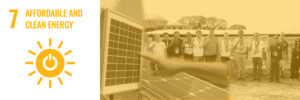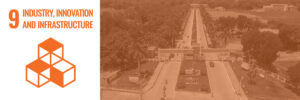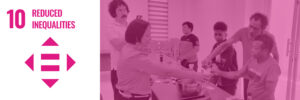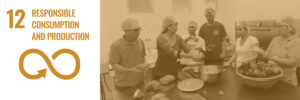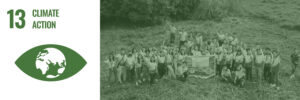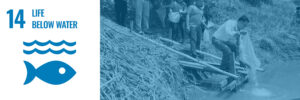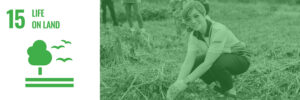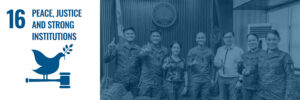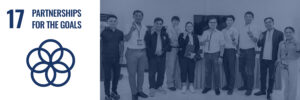2023 – Research | SDG 9 – Industry, Innovation and Infrastructure
Technical Research Category
Evaluation of Mycelial Growth of Wood Ear Mushroom (Auricularia auricula-judea) on Different Culture Media
Proponent: Joel P. Bautista
Abstract
This study evaluated the mycelial growth of Auricularia auricula-judea (wood ear mushroom) on different culture media: Potato Dextrose Agar (PDA), Cassava Dextrose Agar (CDA), Rice-Wash Dextrose Agar (RWDA), Sweet Potato Dextrose Agar (SPDA), and Corn Starch Dextrose Agar (CSDA). The experiment was laid out in a Completely Randomized Design (CRD) with three replications. Mycelial growth was monitored by measuring the average diameter of mycelial colonies daily over two weeks. Statistical analysis using ANOVA revealed significant differences in mycelial growth among treatments. Results indicated that CDA and RWDA were comparable to PDA, the standard medium, in supporting mycelial growth. These findings suggest the potential for alternative, cost-effective substrates in mushroom cultivation. this study contributes to identifying sustainable media options for commercial mushroom production.
Social Research Category
More than ISU CBAPA’S KSA? Designing Faculty Researchers’ Quality Professional Development Prospective Framework for Sustainable Improvement in Research Engagement, Study 1: Knowledge of Institutional Research Ecosystem
Study 2: Research Core Knowledge, Technical and Soft Skills
Proponent: Ralliegh F. Vizcarra, RMT, Ph.D., DBA, DPA
Abstract
This study explores the critical need for a structured professional development (PD) framework aimed at enhancing the core knowledge, technical skills, and soft skills of faculty researchers at Isabela State University College of Business, Agriculture, and Public Administration (ISU CBAPA). Findings reveal that while faculty members possess moderate knowledge of research methods, significant gaps exist in areas such as data collection, ethical practices, data analysis techniques, and publishing strategies. The research emphasizes the importance of integrating both technical and soft skills in PD initiatives to foster a culture of research excellence. By employing a mixed-methods approach, including qualitative descriptive and thematic analysis, the study identifies key areas for improvement and proposes targeted training programs to enhance faculty competencies. Ultimately, investing in comprehensive PD initiatives is essential for empowering faculty to conduct high-quality research and effectively disseminate their findings. This aligns with existing literature that underscores the positive impact of holistic faculty development on research engagement and productivity. The proposed framework aims to cultivate a stronger academic culture at ISU CBAPA, thereby enhancing the overall impact of scholarly contributions.
More than ISU CBAPA’S KSA? Designing Faculty Researchers’ Quality Professional Development Prospective Framework for Sustainable Improvement in Research Engagement
Study : Knowledge of Institutional Research Ecosystem, Attitudinal Traits, Institutional Supports & Challenges
Proponents: Ralliegh F. Vizcarra, RMT, Ph.D., DBA, DPA, Leah B. Bitao, MBA, Jessica C. Managuelod, MPA, DPA, Jeannette Gonzales, CPA, PhD
Abstract
This descriptive study aimed to assess the impact of extension activities and the challenges encountered by the community extension providers in the implementation of the approved extension activities in the College of Education at Isabela State University – Echague Campus. Frequency counts and percentages were used. The mean, on the other hand, was also used to determine the impact of extension activities. Results revealed that positive perceptions of extension activities among respondents, emphasizing their role in social and economic development. While challenges exist, particularly in optimizing training times and addressing occasional weather disruptions, the overall implementation of extension programs is effective. Strategic improvements in training, communication, and adaptive management practices are recommended to further enhance program impact and sustainability. The study recommends that the existing college extension training activities may be continued and further enhanced taking into considerations the assessment made on various criteria that were identified.
Faculty of the college of Education are encouraged to continue their best practices in terms of planning, disseminating and Monitoring and evaluation of the approved extension activities. Problems that were encountered such as time allocation in the conduct of extension activities and the use of their own materials or equipments during return demonstration as well as difficulty in the consolidation of reports need to be addressed immediately in order to come up with a more responsive extension training activity. Though there are other problems that were “rarely” encountered by the clientele these need not be neglected rather course of actions or interventions need to be addressed. The college extension unit may request assistance from the university for the provision of vehicle in going to the adopted barangay or school when conducting extension activities.
Technological Research Category
Design, Development and Manufacture of Low-Cost Mechanical Seeder for Rice Production
Proponents: Raphy A. Sugue, Joel V. Pangangaan
Abstract
The project was conceptualized based from farming experiences on manually broadcasted and direct seeded rice. For cost-effective farming operation, the machine was designed through the Sketch-Up Application and fabricated manually through the aid of a welding machine, tools, and equipment. The machine was made up of iron bars, G.I. pipes, and polymers. It is composed of a boom paired with an axle in which eight pairs of seed pockets are attached. It has 2 cage wheels supported with pillow block bearings. The right-side cage wheel drives the mechanism and operation of the machine and the left-side cage wheel is a free-wheel that serves as support for balance operation. Sprocket with a chain is attached to the axle-shaft connecting to a smaller sprocket connected to a horizontal rod purposely to paddle the grains inside the container by a vertical rod attached from the horizontal rod. It has an eight seed container for the germinated seeds made of transparent mineral water polymer. The seeder is provided with a floater made of leaf spring so as not to get stuck into the mud. It is provided with a 2″ x 4″ x 6′ lumber that serves as paddy planer before the seeds drop and a shoe-like plow in the middle to construct a canal for excess water. The specification of the machine includes the width of 190 cm, length of 140 cm, and height of 70 cm. Effective width where seeds will be dropped is 140 cm composed of eight compartments with equal distance of 20 cm. Based on the calibration of the machine for a 1.4 m by 3.0 m (4.2 sq.m.) area, 3 tests had been made. For hybrid seed (dry basis), the machine dropped 21 grams (Test 1 ), 22 grams (Test 2), and 23 grams (Test 3). Considering the average test, the 22 grams of seeds distributed in a 1.4 m width by 3.0 m length is equivalent to 52. 38 kilograms per hectare. For inbred seed (dry basis), the same test was made and the average distributed seed in a 4.2 sq.m. was 30 grams, equivalent to 71.43 kilograms per hectare. For the time-efficiency test, average velocity of operation was 3 km per hour considering all other time-consuming activities. Considering the effective width of the machine, a one-hectare area of operation can finish within 2.38 hours. For the cost-effective operation compared to transplanted rice, one-day operation of two laborers, the machine can accomplish 3.36 hectares with a labor cost of Php 1,500.00 compared to Php 8,000.00 to PI 0,000.00 per hectare straight contract (pakyaw with and without snacks).
Extension
COMMUNITY LEARNING TECH HUBS IN NORTHERN ISABELA: CREATING EQUITY AND ACCESS TO EDUCATION
Proponents: Ivy M. Tarun, Rosalinda B. Guiyab, Jake D. La Madrid, Amy Lyn M. Maddalora
This extension project aims to establish Community Learning Tech Hubs in the Northern Isabela region, with the goal of fostering equity and facilitating enhanced access to education. The project recognizes the pressing need to address educational disparities and bridge the digital divide prevalent in underserved 4.ertities.
The project made use of a participatory approach to involve local communities in the design, implementation, and evaluation of the CLTHs. The project worked with local government units, and schools in identifying the areas and communities that will benefit the most from the CLTHs. The project also provided training on the use and management of CLTHs to local stakeholders to ensure its sustainability.
The project likewise made use of survey to collect data on the significant contributions brought about by the CLTHs to the communities. Statistical analysis was, used to analyse the data to identify the immediate ate effect or outcome of the project.
Overall, this project was able to contribute to the efforts of the local government units in promoting social inclusion and equity in education, and in achieving the United Nations Sustainable Development Goals (SDGs), particularly SDG 4 Quality Education, SDG 9: Industry, Innovation and Infrastructure, SDG 10: Reduced %equalities, and SDG 17: Partnerships for the Goals.
